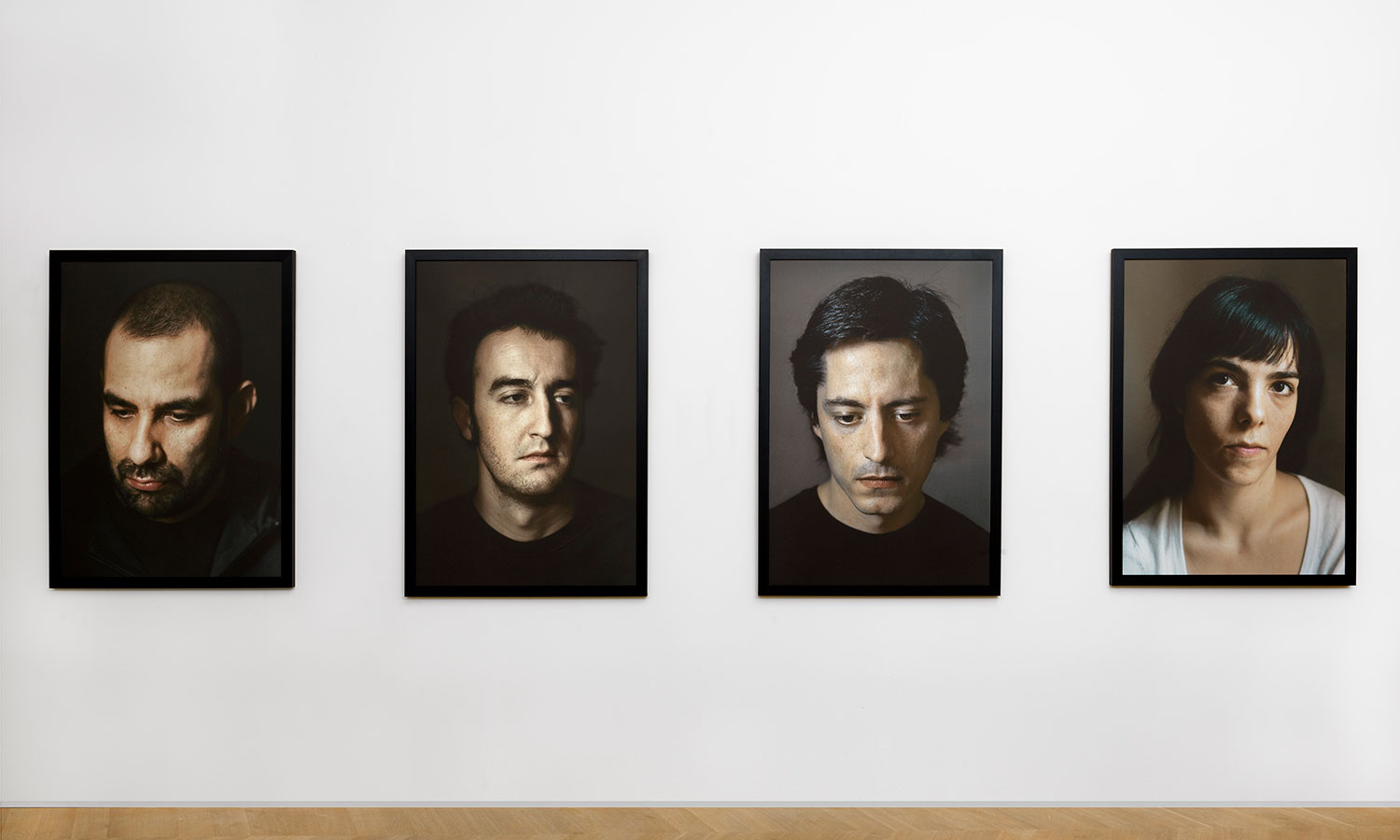CRAIGIE HORSFIELD
New Works and Slow Time
29 Apr – 30 Sep 2016
Across a group of his earlier and new masterpieces, the exhibition traverses the photographic oeuvre of CRAIGIE HORSFIELD: art as a shared experience rooted in his notion of “slow time”—imagined as attention to and expansion of an ordinary present of which the past is understood as a dimension, a deep present.
Relation – the Idea Central to Craigie Horsfield’s Oeuvre
Horsfield, working over 45 years in the field of social projects in contemporary art, has opened significant conceptions of community and the individual. Photography, film, sound, drawing, performance, installation, and other media are used as instruments in the thinking of “relation,” “slow time,” the “present,” “attention,” and consciousness. Relation, the idea at the center of Horsfield’s life work, proposes that being is generated “between” individuals—simply expressed: we bring each other in to being—and that being happens, takes place, in each encounter, each meeting, each conversation. This is the sphere of relation as “telling,” significantly a double meaning in English, for Horsfield the sphere of arts’ working.
An Installation-in-Progress Exhibition
To further conflate this concept of creation and viewing, the program at TMH is organized as an installation-in-progress starting on April 29 and culminating with a full view on September 15, 2016. It also acts as a primer to the ideas that inform the exhibition of some of the most significant of Horsfield’s works of the last ten years, upcoming at the Centraal Museum in Utrecht at the end of October.
PUBLICATION
TMH Catalogue 3.3, 2016
FAIR & TALK
Unseen City Program, 23-25 Sep 2016 / Craigie Horsfield in open conversation with writer Adrian Dannatt, 15 Sep 2016
SCREENINGS
The Everyday in Worldview in the films of Craigie Horsfield, Carolee Schneemann, Rini Hurkmans, and Hans Scholten, 18 and 25 June 2016
Download Press Release
Craigie Horsfield: Artist for the 21st Century
Exploring the artist’s ongoing research of the medium of photography, the exhibition will include: large black-and-white photographs from a group regularly seen in museums worldwide and in the Netherlands (the Stedelijk, Amsterdam in 1992 and van Abbe, Eindhoven in 2002); the so-called Irresponsible Drawings, differently, but nonetheless “photographically” made—that is by a light-trace from objects, such as flowers, food, or drinking vessels; and new works that employ digital print technologies developed by Horsfield and used in a most intense and creative attention to nature, the phenomenal world, and to others in portraits made as profound conversations.
Craigie Horsfield’s complex fusion of photographic possibilities, a veiled territory (seductive and risky) in the age of the digitally-stripped selfie and instant image exchange, has been a subject of extensive art writing. The show of these unquestionably 21st century works at TMH would further insist on drawing lines of comparison with Dutch paintings on similar subjects but with a different union of idea and tableau. This likely intense gallery dialogue is in itself a way of seeing and thinking art.
TMH has been involved with the artist’s work for almost three decades through its sister organization, the ICAR foundation.
BIOGRAPHY
Craigie Horsfield (1949, UK) was nominated for the Turner Prize in 1996. He participated in Documenta X and XI (Kassel), Carnegie International 1995, and the Whitney Biennale 2003. His work continues to be featured by leading museums, which have included MHKA (Antwerp), Jeu de Paume (Paris), Stedelijk Museum (Amsterdam), Kunsthalle (Zurich), Reina Sofia (Madrid), Centre Georges Pompidou (Paris), and the National Gallery and Tate Galleries (London), to name just a few. While his work has been a part of shaping the thinking and practice of art over the last 50 years, in its central concerns it is work that is more than ever prescient today. It speaks to new ideas of what art may be and of how we imagine ourselves, using a language that is at once seemingly familiar in its forms, but which, with attention and time, becomes something else—a work that has radically unfamiliar meanings.




























